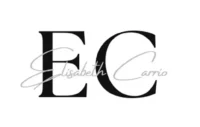Over the years, I've had the opportunity to explore different forms of artistic expression. I started with dance and piano, two passions that have never left me. I then practiced different art forms: singing, theater, painting. I only understood much later that art, whatever the discipline practiced, is a path to inner freedom. These last three practices, which I will discuss in this article, have nourished my mind and imagination, allowing me to reconnect with parts of myself that I never suspected.
Art as a means of releasing emotions and creativity
When I paint, sing, or perform, I feel this deep connection that transcends everyday reality, as if art opens a window onto a larger dimension. And this sensation recalls Plato's myth of the cave. In this allegorical tale, men are chained in a cave, seeing nothing of the outside world but shadows projected on a wall. For them, these shadows constitute all of reality. But art, just like philosophy for Plato, is a means of escape from this cave. It pushes us to step out of our comfort zone and look beyond illusions, to perceive what is invisible to the naked eye.
Art is a mirror that reflects not only the outside world, but also our own inner worlds. When I perform theater, I engage in a process of transformation. By embodying a character, I discover hidden aspects of myself. It's a way to delve into the recesses of my being, to explore my emotions, my thoughts, my fears. Acting is therapy because it's an introspective journey, a way to meet oneself.
The contributions of different art forms
Singing, on the other hand, is a celebration of air, of poetry. It's a liberation. When I sing, each note is like a breath of life beyond words. There is nothing purer than the human voice, this instrument that directly touches the soul, that speaks to the heart without detour. Singing is a vital impulse that allows us to release buried emotions, to connect with others and with ourselves in a unique way.
Finally, painting is, for me, the transcription of an intuition. It is a silent dialogue between the invisible and the visible. When I stand in front of a blank canvas, I never know in advance what it will become. It's like writing a novel: the colors, shapes, and lines emerge throughout the process, dictated by a sudden inspiration or by a message that seems to come from elsewhere. It is a journey into the unknown, a creative act that brings us closer to who we are deep within ourselves.
We all have a talent just waiting to be expressed, but we often leave it buried under the weight of everyday life, societal expectations, or the fear of judgment. The purpose of artistic practice, however, is not recognition by others, but the liberation of this talent that lies dormant within us. Art does not need an audience to be authentic or legitimate. It is an act of pure freedom, an unfiltered, uncompromising self-expression.
Transcending our limits
When we engage in an artistic practice, whether it's painting, singing, or acting, we don't do it to be applauded or recognized, but to free ourselves from our own chains, to offer the world what lives within us. This process is profoundly therapeutic because it allows us to reconnect with our own essence. By unleashing our talents, we offer ourselves the opportunity to discover ourselves in a new light, to become aware of our creative potential, and above all, to live in harmony with ourselves. However, many people feel obstacles when approaching art. Whether it's the fear of failure, the gaze of others, or even a lack of self-confidence, these obstacles can prevent creative potential from emerging. This is where hypnosis, as a therapeutic tool, can play a vital role.
Hypnosis allows access to deeper parts of the unconscious, where limiting beliefs often reside. These beliefs, often rooted in childhood, tell us that we are "not creative enough," "not talented enough," or that "art is not for us." By working with the unconscious, hypnosis can unlock these obstacles and allow everyone to regain the confidence needed to engage in artistic practice without fear of judgment. It helps release repressed emotions and transform negative thoughts into sources of inspiration.
Conclusion
Art, in all its forms, is a way to escape the cave. It allows us to see beyond the shadows. What we believe to be reality is often a reassuring construct. But, intuitively, art allows us to access another dimension of reality. It liberates us, awakens us, and offers us perspectives we had never considered.



